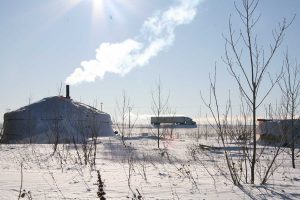On September 29, 1931, between 300 and 400 miners and their wives from the Bienfait area coal mines drove to Estevan, Saskatchewan, to march in protest of their working and living conditions and the refusal of management to acknowledge their newly formed union.
The peaceful protest and show of solidarity by the miners escalated into a scene of violence and destruction when the miners were met by police and warned to turn back. Pushed to the limit by beggarly wages, raising families in tar-paper shacks, working in poorly ventilated underground shafts with rotting timbers, frequent cave-ins and high concentrations of carbon monoxide, the miners lashed out.
Violence turned to gunfire with the arrival of RCMP reinforcements. Eight miners and four bystanders were wounded. Three miners were shot dead. Emotions ran high. Estevan became a community divided between those who supported the miners and those who approved of the actions against them. Labeled “Black Tuesday”, the event was a microcosm of the labour unrest, depression despair, and fear of the “Red Menace” that ran throughout the 1930s.


